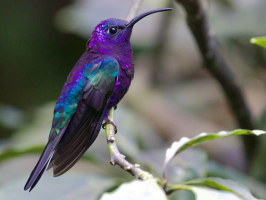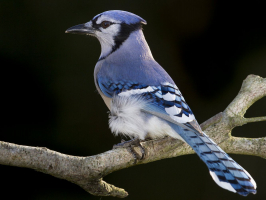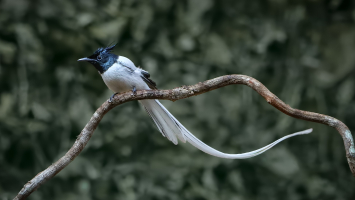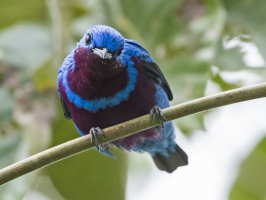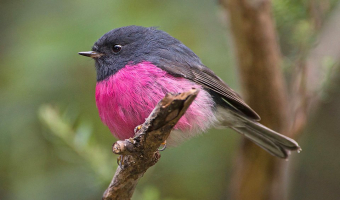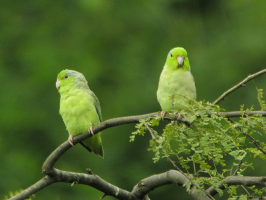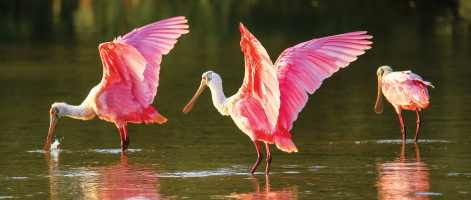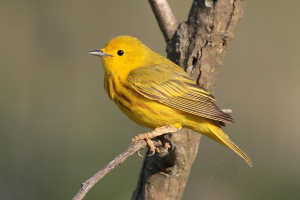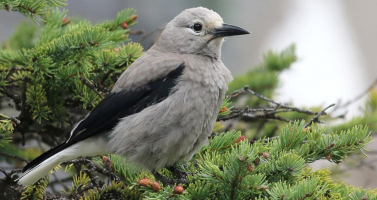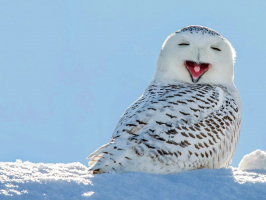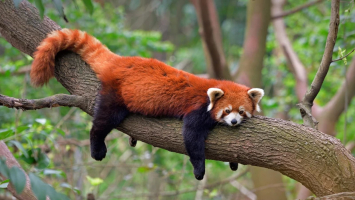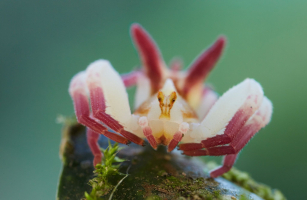Top 10 Most Beautiful Red Birds
There is a wide range of birds' plumage. Some birds have relatively dull plumage, while others have vibrantly colored feathers, such as red. In this article, ... read more...Toplist will discuss the top most beautiful red birds.
-
The Crimson Sunbird, which belongs to the Nectariniidae family of sunbirds, is well-deserving of being one of the most beautiful red birds. These species' males have a brilliant crimson breasts and back. Meanwhile, their belly is pale green, and their tail is a burned golden hue.
Crimson sunbirds can be found in tropical woods throughout South and Southeast Asia. To shelter their eggs, these small red 4-inch long birds build hung nests on tree branches. The crimson sunbird, like all other sunbirds, feeds mostly on nectar collected from flowers. Because of its hovering ability, the red sunbird is frequently mistaken for a hummingbird because both of them feed on insects and nectar, and have small sizes as well as impressive speed. Furthermore, it consumes a wide range of insects. Sunbirds are sometimes referred to as spider hunters due to their habit of chasing spiders. The crimson sunbird has been classified as a species of Least Concern due to its vast distribution.
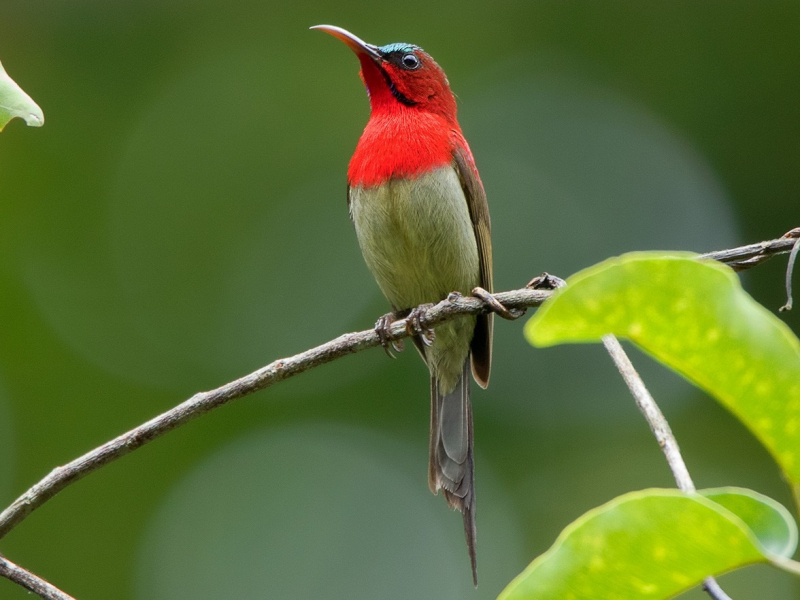
Photo: eBird 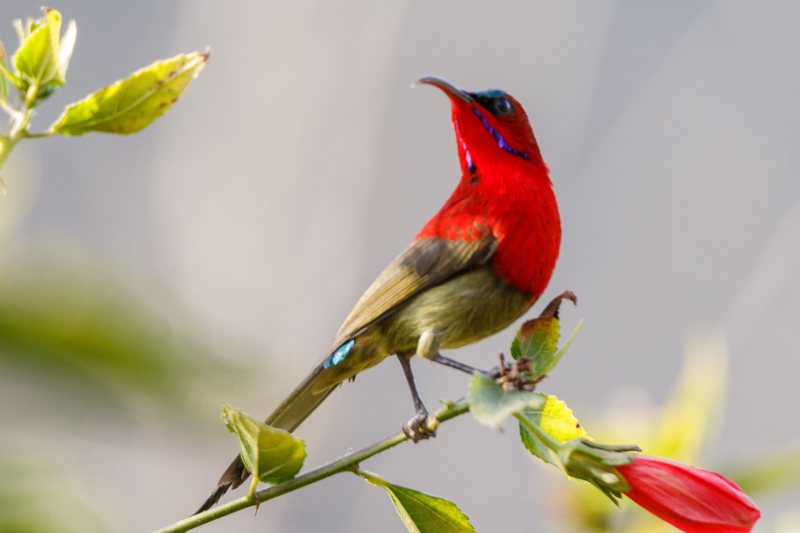
Photo: Wikimedia Commons -
The Scarlet Ibis belongs to the Threskiornithidae family of birds. It is distinguished from other ibises by its vivid red coloration, which gives it its name. From its head to its toes, virtually every aspect of its body is scarlet. Their color, on the other hand, comes in a variety of colors ranging from light to dark. The legs and bills of these birds are also reddish in color, though they may appear duller reddish-gray during the non-breeding season.
They dig in the mud with their long curved bills to find food, but they will also steal food from other animals. Crab, shrimp, and other red shellfish provide them with their red color. Scarlet ibises are found in wetland and coastal habitats throughout South America and the Caribbean. Scarlet Ibises dwell in big social groups even when they are not reproducing. The scarlet ibis is now classified as a Least Concern species by the IUCN.
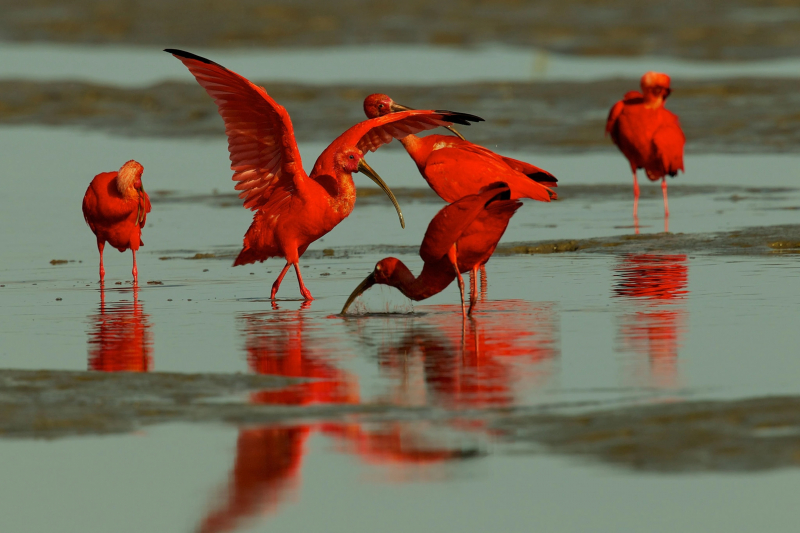
Photo: National Geographic Source: Toledo Zoo -
The Summer Tanager is a songbird in the Cardinalidae family. It gets its name from the brilliant red color that covers its entire body and conjures up images of hot summer days. Male summer tanagers have rose-red feathers, while females have yellowish-green feathers. As juvenile birds grow older, they typically develop a mottling of red and yellow plumage. Their red hue derives from their diet, which includes berries and insects, particularly bees.
During the summer, they may be found in the southern United States and Mexico, while during the winter, they can be found in Central and South America. They prefer to reside in wooded locations with enough trees to build their nests in. Summer Tanagers are around 6.7 inches long and 1 ounce in weight. If you come across one in the wild, its vocalizations may sound similar to those of an American robin.
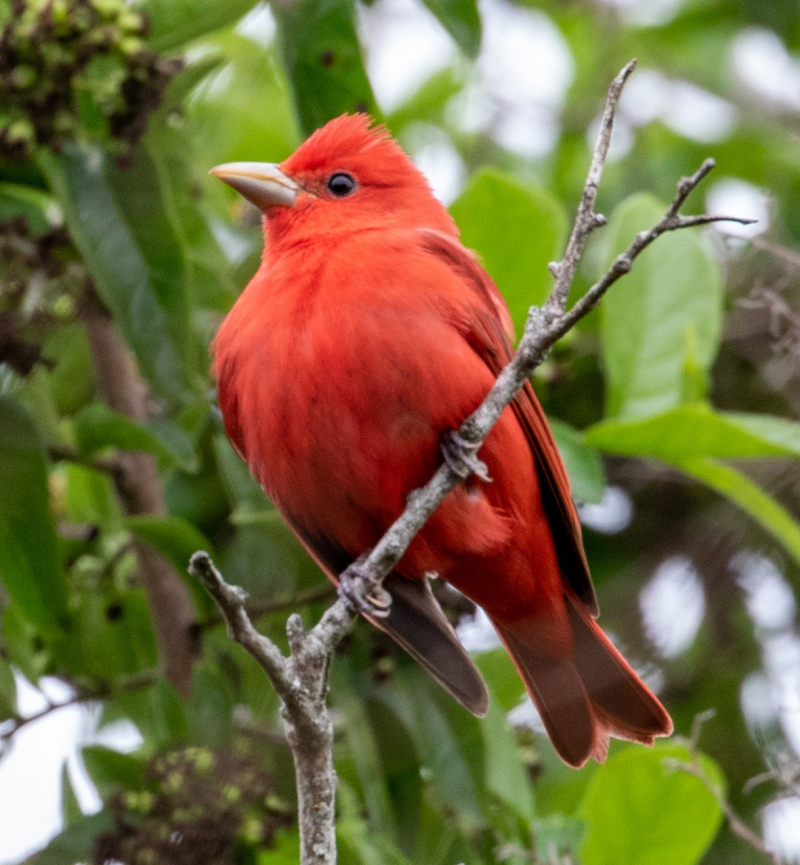
Photo: Wikipedia 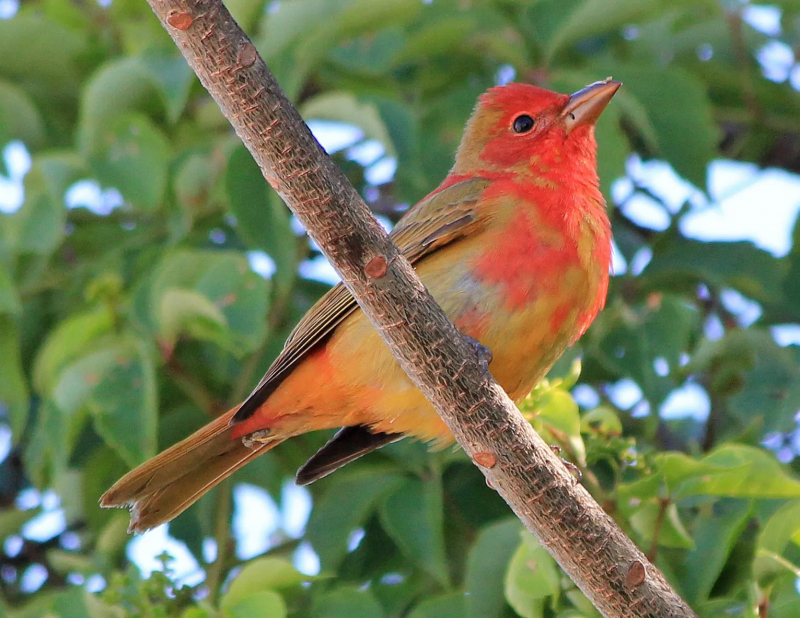
Photo: Santiva Chronicle -
The Red-billed Firefinch, sometimes known as the Senegal firefinch, is also one of the most beautiful red birds. Males have dull crimson feathers, but their wings are rufous or brown rather than red. Females, on the other hand, are more brown than red, with a crimson patch of feathers on their faces. Males and females, on the other hand, have pink bills and yellow rings around their eyes.
Red-billed Firefinches are native to Sub-Saharan Africa and belong to the Estrildidae family of finches. They can be found in both grasslands and agricultural regions, and they are frequently seen in close proximity to humans. Their diet consists mostly of seeds, but they will eat some locally cultivated grains as well. Red-billed firefinches lay their eggs in a distinctive domed nest constructed of grasses. They are classified as a species of Least Concern by the IUCN because of their large range and population.
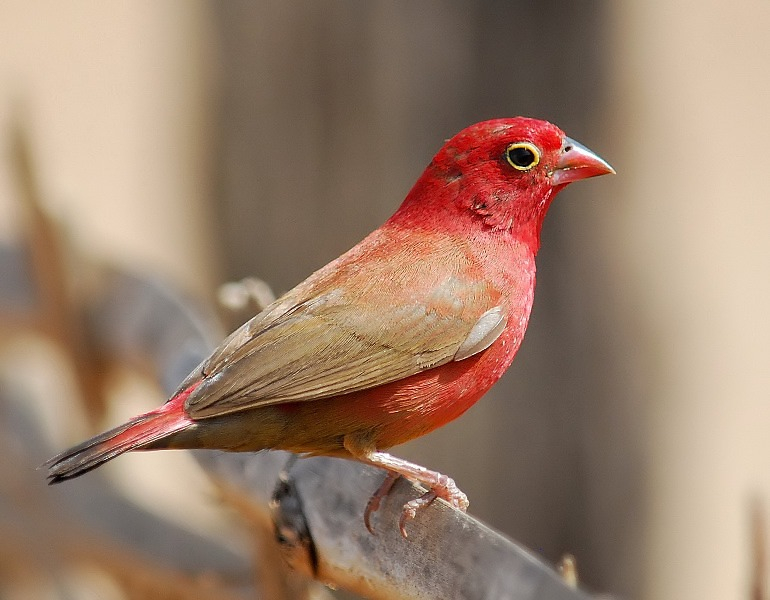
Photo: Trek Nature Photo: Wandering Sole Images -
The Scarlet Tanager, like the summer tanager, is a member of the Cardinalidae family. It takes its name from the males' characteristic crimson or scarlet color during the summer months, which helps it earn the title of one of the most beautiful red birds. Males have a primarily red appearance, with black wing and tail feathers. Females, on the other hand, are yellowish-green all year. Scarlet tanagers are typically 6.3 to 7.5 inches long and weigh about 1 ounce.
They can be found in eastern North America, Canada, and Mexico, and they spend the winter in South America. The Scarlet Tanager has a very narrow bill compared to other cardinals. It eats fewer seeds than other cardinals, preferring to hunt insects instead. They devour a broad variety of insects, including bees, wasps, and spiders, and can catch them in flight or on the ground. They’re also one of the most difficult birds to find as they stay high in the forest canopy creating rich, burry songs.
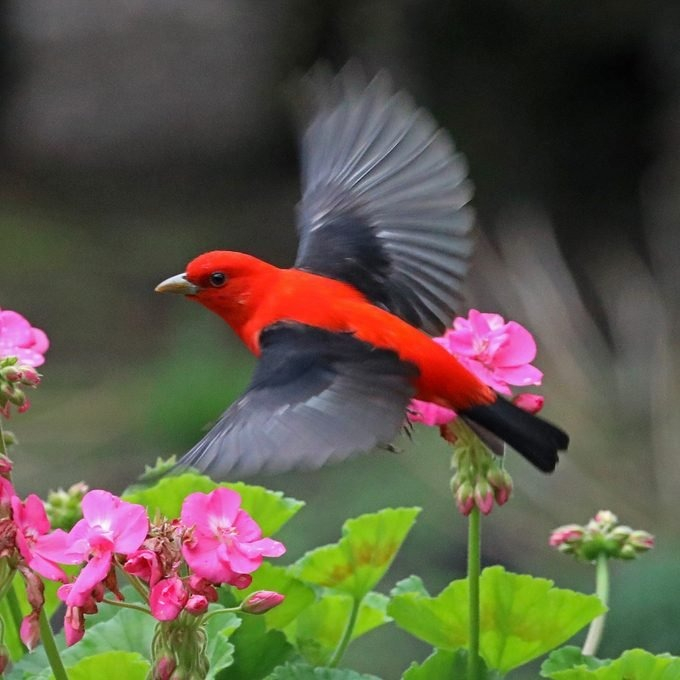
Photo: Birds and Blooms 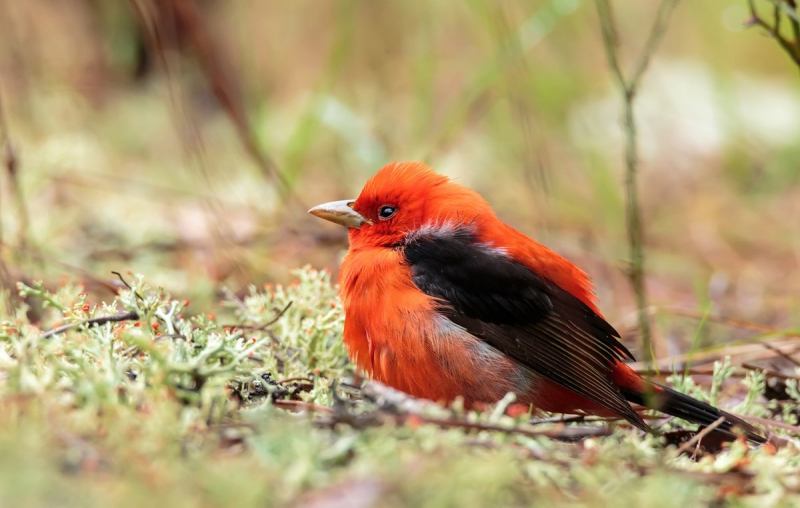
Photo: National Park Service -
The Red Crossbill, often known as the common crossbill, belongs to the Fringillidae bird family. Males have brilliant red or orange feathers, while females have yellow or green feathers. However, in the wild, they can change dramatically and have a wide range of hues in their plumage. Furthermore, their wings appear darker brown than the rest of their plumage. Meanwhile, the crossbill part of its name alludes to the shape of its beak.
The upper half of the red crossbill's bill covers the lower half. The red crossbill can eat largely hard conifer seeds and other fruits thanks to its overlapping pattern. In the morning, Red Crossbills collect grit on the ground. Adult males sing and watch for predators from the tops of conifers. Coniferous forests in North America, Europe, and Asia are home to red crossbills. The IUCN classified the red crossbill as a species of Least Concern due to its abundance and vast distribution.
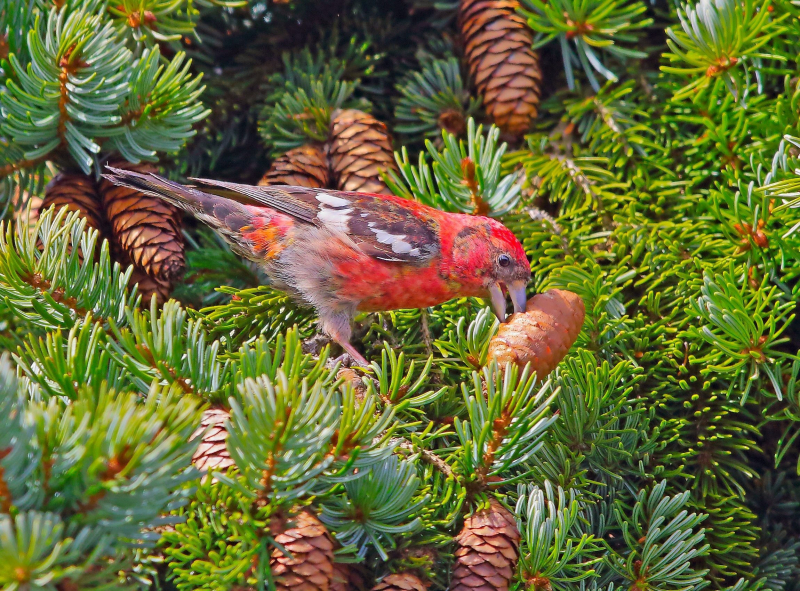
Photo: Birds and Blooms Source: Wildlife World -
Among red-colored birds, the Vermilion Flycatcher is a standout. Tyrannidae is the family of tyrant flycatchers, which includes this little bird. The rich vermillion-red hue on the males' breast, belly, and the crest is referred to by the first half of their name, vermilion. The second half of its name, on the other hand, references its habit of catching flies in mid-flight. Male vermilion flycatchers have brown tails and wing feathers in addition to their red coloration.
The majority of Vermilion Flycatchers are 5.1 to 5.5 inches in length and weigh less than 0.5 ounces. They can be found in regions of the southern United States, Mexico, and South America. Their diet also includes a variety of grains in addition to insects. When male Vermilion Flycatchers want to attract females, they often provide them with presents, such as a butterfly or other brightly colored insect.
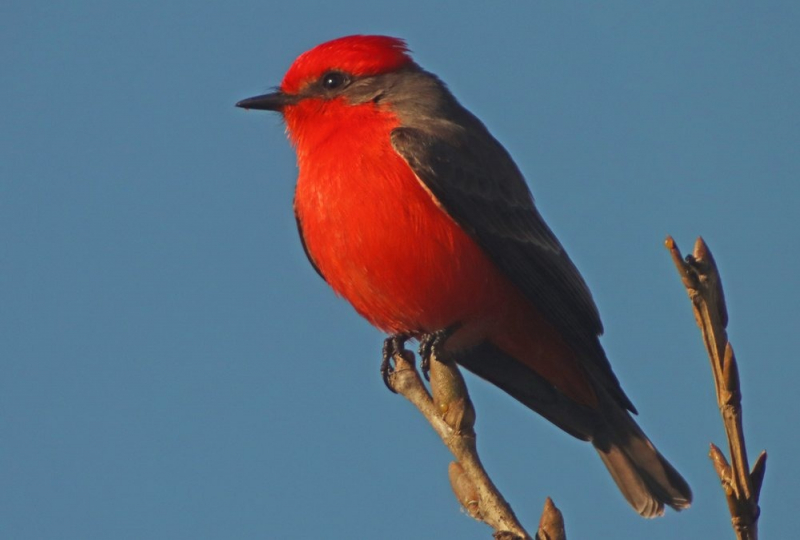
Photo: 10000 birds Source: Tara Tanaka -
The Red-and-green Macaw, sometimes known as the green-winged macaw, is a big parrot belonging to the Psittaciformes family. The name of the red-and-green macaw comes from its plumage. The color of its chest, head, shoulders, and tail feathers are all vivid red. Its wings, meanwhile, are decorated with green and blue feathers. The red-and-green macaw is 35 to 37 inches long and weighs 2.3 to 3.7 pounds.
They are one of the most noticeable red birds due to their striking appearance. They can be found in the wild in Brazil, Colombia, Bolivia, Ecuador, Peru, and Paraguay, where they are native. The green-winged macaw has a long-term relationship with its spouse. In a nest created in a hole in a tree, the female usually lays two or three eggs. The eggs are incubated for around 28 days by the female, and the young leave the nest about 90 days after hatching. The wild population of Red-and-green Macaws is in decline due to habitat destruction and illegal trafficking.
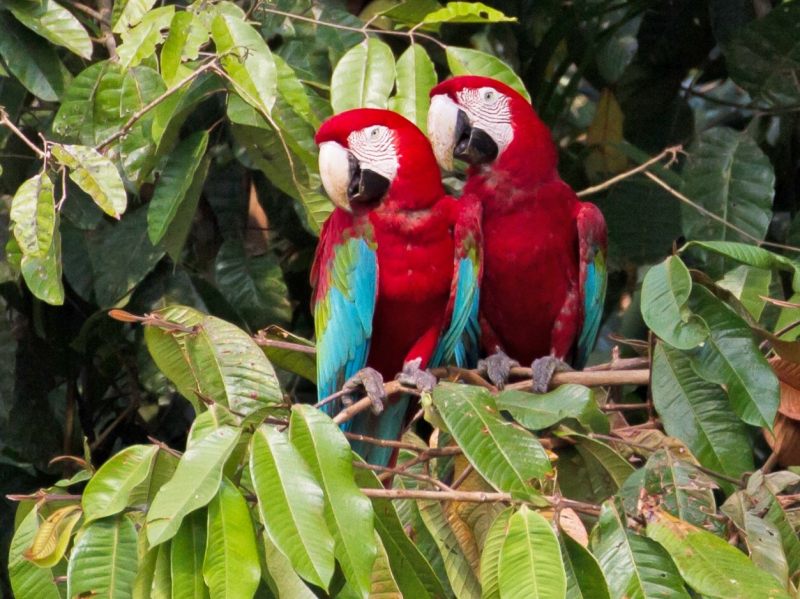
Photo: eBird 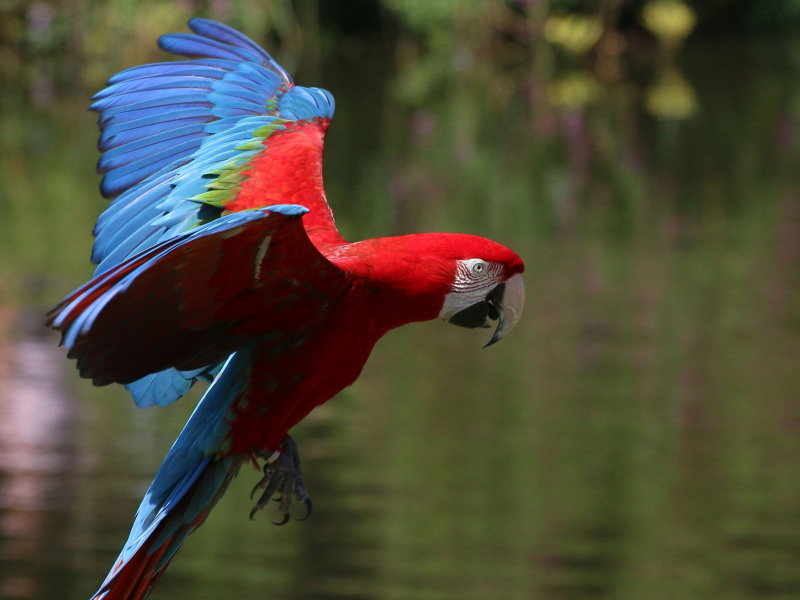
Photo: The Spruce Pets -
The redbird, common cardinal, and simply cardinal are all names given to the Northern Cardinal. It is a member of the Cardinalidae family, which includes the scarlet and summer tanagers. The northern cardinal is one of the most well-known of all red-colored birds. Males are easily distinguished by their vivid red plumage, huge crest, and black face mask. Females, on the other hand, have a more drab appearance, with red coloring on the tail, breast, and crest.
Northern Cardinals are found all throughout North America. They are mostly found in the eastern United States, Mexico, and a small portion of southeastern Canada. Woodlands, wetlands, scrubland, and urban areas are among their favorite habitats. Northern cardinals eat a variety of foods, including grains, berries, and insects. Cardinals don't move and don't molt into a dull plumage, so they're still stunning in snowy backyards in the winter. Their lovely whistles are one of the first sounds awaited in the morning of summer.
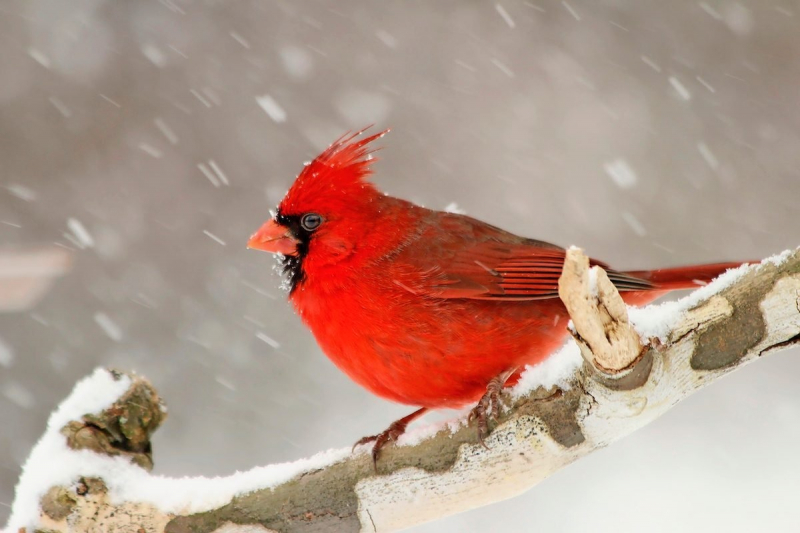
Photo: Birds and Blooms Source: Lesley the Bird Nerd -
‘I’ iwi belongs to the finch family Fringillidae and is also known as the scarlet honeycreeper. Although its tail and wings are black, it has vivid red feathers on its head, breast, and undersides. The 'I'iwi drinks nectar from flowers with its long, pink bill, which accounts for the majority of its diet. It does, however, devour a wide range of arthropods.
'I'iwis are only found on the Hawaiian Islands, where they are the third most common native bird. Therefore, it is famous for being a symbol of Hawai. They make cup nests in tree branches out of twigs, flower petals, and feathers. They are currently threatened by habitat loss caused by farming and horticulture. Deforestation destroys their dwellings as well as their food supplies. As a result, the 'I'iwi is classified as a vulnerable species.
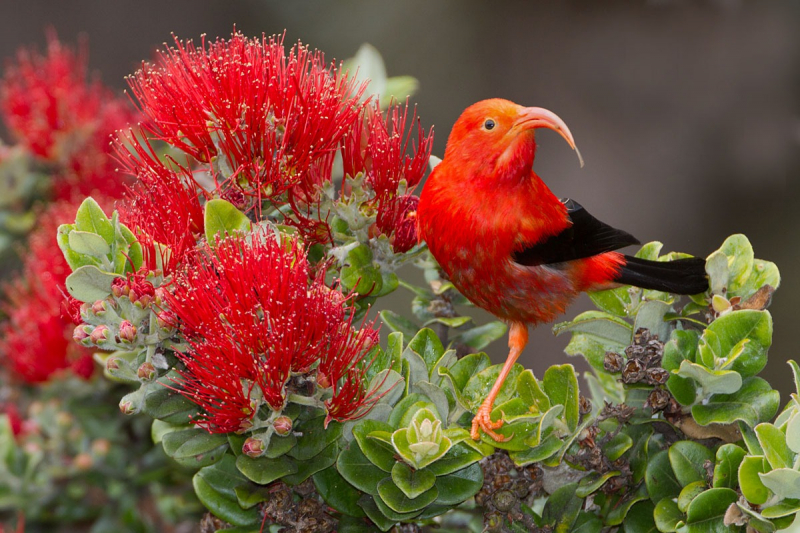
Photo: Honolulu Civil Beat 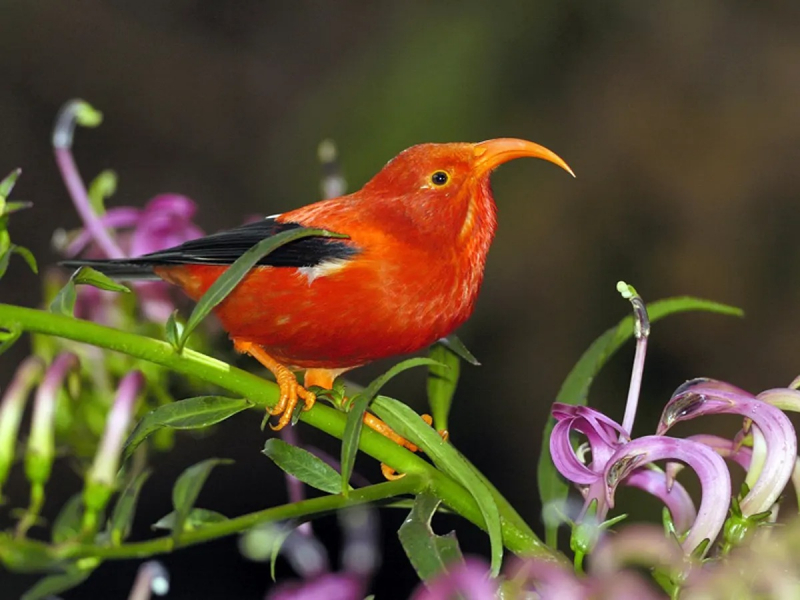
Photo: The Guardian












